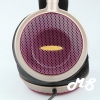My personal review of Lepai LP2020A+ Speaker Amplifier (image heavy)
-
Topics
-
0
-
1
-
Likeusb ·
Posted in Peripherals1 -
4
-
Tact1cal ·
Posted in CPUs, Motherboards, and Memory3 -
10
-
Moosecuda ·
Posted in Troubleshooting1 -
StarsMars ·
Posted in CPUs, Motherboards, and Memory4 -
11
-
ChrisLoudon ·
Posted in Cooling4
-
-
play_circle_filled

Latest From ShortCircuit:
This wireless router can’t possibly be good… can it? - Minion Routers


.jpg.5cc14cacf0bfa9d58de316927a37ec08.jpg)













Create an account or sign in to comment
You need to be a member in order to leave a comment
Create an account
Sign up for a new account in our community. It's easy!
Register a new accountSign in
Already have an account? Sign in here.
Sign In Now